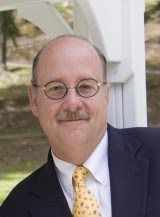
Every autumn as leaves and temperatures fall, I anticipate the first fire in the fireplace. I continue to build fires well through the cool spring nights. Each new fire is a personal test of my log selection and arranging skills-some of which I fail; my father-in-law and I have a running contest to see who's fire will smoke and go out the fastest.
When my home (and his) was built in the late eighteenth century, building fires was serious business. These fireplaces were undoubtedly the center of the families' lives and perhaps sometimes made the difference between life and death. Those farmers cooked in their fireplaces, slept near them and made sure they never went out during the long cold winter.
In the late 1700's Count Rumford (who was born Benjamin Thompson in Woburn, Massachusetts in 1753) wrote about his fireplace innovations which included a high wide firebox as well as widely splayed jambs. These changes greatly increased efficiency and reduced smoking. We often use Rumford designs today, especially when efficiency is paramount. The basic design of the fireplace is still the same after hundreds of years and although Count Rumford made great improvements to the efficiency of fireplaces, most people prefer a deep fireplace that can comfortably hold oversized logs.
Even though a fireplace in the 21st century is physically unnecessary to heat a house, it is the heart of what we consider home. There is a comfort associated with a roaring fire in the fireplace and a thrill to contain the most dangerous element any home can know. We all bring our memories of childhood hearth sitting to the table when we began to design our own fireplace. My daughters' favorite question after playing in the snow is "Can we build a fire and drink hot chocolate?", all she cares about is the comfort and the cocoa.
Modern building codes have encouraged us to become safer and more efficient in our fireplace designs. A house fire caused by a well maintained, well-designed modern fireplace is almost unheard of.
There are many alternatives to a traditional fireplace such as wood stoves, gas inserts and even LCD screens that show a crackling fire. While being very convenient, those alternatives will never compare to the first fire I start in my fireplace each fall.
When my home (and his) was built in the late eighteenth century, building fires was serious business. These fireplaces were undoubtedly the center of the families' lives and perhaps sometimes made the difference between life and death. Those farmers cooked in their fireplaces, slept near them and made sure they never went out during the long cold winter.
In the late 1700's Count Rumford (who was born Benjamin Thompson in Woburn, Massachusetts in 1753) wrote about his fireplace innovations which included a high wide firebox as well as widely splayed jambs. These changes greatly increased efficiency and reduced smoking. We often use Rumford designs today, especially when efficiency is paramount. The basic design of the fireplace is still the same after hundreds of years and although Count Rumford made great improvements to the efficiency of fireplaces, most people prefer a deep fireplace that can comfortably hold oversized logs.
Even though a fireplace in the 21st century is physically unnecessary to heat a house, it is the heart of what we consider home. There is a comfort associated with a roaring fire in the fireplace and a thrill to contain the most dangerous element any home can know. We all bring our memories of childhood hearth sitting to the table when we began to design our own fireplace. My daughters' favorite question after playing in the snow is "Can we build a fire and drink hot chocolate?", all she cares about is the comfort and the cocoa.
Modern building codes have encouraged us to become safer and more efficient in our fireplace designs. A house fire caused by a well maintained, well-designed modern fireplace is almost unheard of.
There are many alternatives to a traditional fireplace such as wood stoves, gas inserts and even LCD screens that show a crackling fire. While being very convenient, those alternatives will never compare to the first fire I start in my fireplace each fall.





No comments:
Post a Comment